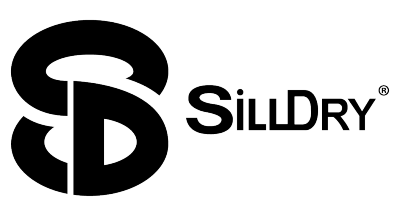Traditional flashing consists of a thin layer of weatherproof material, such as sheet metal or vinyl, cut to fit around the edges of doors and windows. Although the tried-and-true flashing solutions provide essential protection, builders/contractors face a number of challenges when using these long-established methods and materials.
Size variation
Doors and windows are constructed in a range of sizes. Traditional flashing materials must be pre-fabricated, so if the door or window size is not within standard size specifications, additional time and money must be spent altering or custom designing appropriate flashing.
Style differences
Similarly, doors and windows come in a variety of shapes and styles, making it difficult for engineers to ensure adequate flashing products and installation.
Weather conditions
Weather conditions vary depending on location. Since some materials are more susceptible to expansion and contraction due to temperature fluctuations, engineers are faced with the challenge of finding the right material and flashing design for the local climate.
Installation
Once the flashing material is selected, installation can be challenging due to the wide size and style variations. What’s more, traditional flashing materials are thin and can easily be torn, pierced, broken, or bent on a busy construction site.
Durability
Engineers must also consider the long-term durability of the flashing installation. The materials selected should withstand decades of use, which can be a problem if the weather conditions change or the flashing is not a perfect fit.
With all of these considerations, it is no surprise that engineers and construction professionals are looking into more versatile flashing innovations.
The Solution: SillDry Smart Accordion Technology®
SillDry Smart Accordion Technology offers a straightforward and zero-waste solution to the problems of traditional flashing. SillDry’s groundbreaking design is durable, versatile, and easy to install, making it more efficient, reliable, and cost-effective than other flashing products on the market.
Engineering behind the technology
For over 30 years, SillDry founder Kieran McMahon has been battling the complications caused by water damage. As an acknowledged and experienced expert on the integration of exterior cladding systems, Kieran had the benefit of a unique perspective from which to consider and develop a more effective flashing solution. His conceptualization became a reality when he joined forces with manufacturing partner The Rodon Group. With Kieran’s flashing expertise and Rodon’s precision manufacturing techniques, the duo could fully realize their design in SillDry.

SillDry’s patented flashing is constructed of durable and waterproof thermoplastic olefin (TPO) and is specially designed to direct moisture that collects around windows and doors to the building’s exterior. The innovative accordion design allows for simple installation in windows and doors in a wide range of sizes and styles. It is a one-piece component, which allows for easy installation without the need for onsite assembly. Simply secure one end and stretch SillDry to the other side of the window or door opening before securing the other end.
How It Benefits Your Construction Project
Ease of installation
SillDry’s one-piece accordion design makes it easy to install without the need for special training or equipment. Since it is easily adjusted to fit most standard openings between 18 inches and 21 feet, it is not necessary to take highly detailed measurements. SillDry’s versatile nature means a perfect fit every time without the potential for human error.
Cost savings
SillDry’s easy adjustment helps save on labor costs by eliminating the need for special training, detailed measurement, and onsite assembly. This flashing saves time and effort and doesn’t produce any waste material since it does not have to be cut to fit door and window openings. This will help you save money on material that would otherwise be wasted with traditional flashing installation processes.
Time savings
With its easy-to-install accordion design, SillDry saves time for construction crews and design engineers alike. SillDry can be installed in all weather conditions, thereby reducing overall construction time due to inclement weather.

